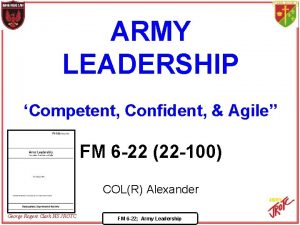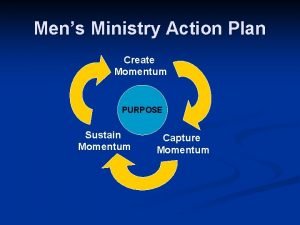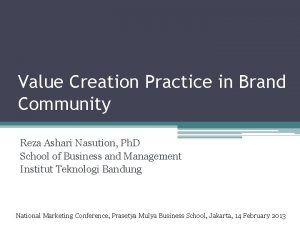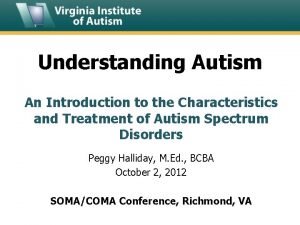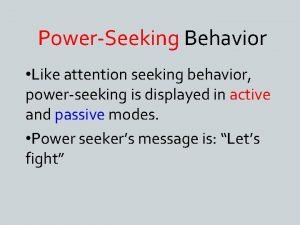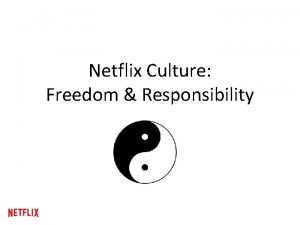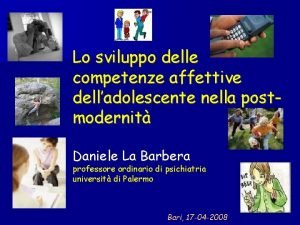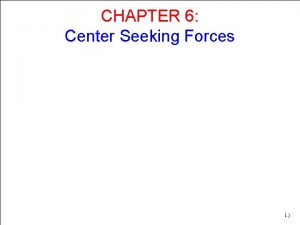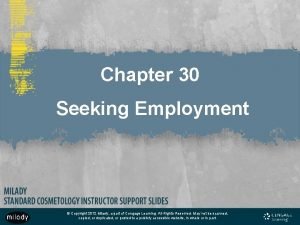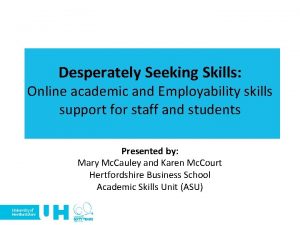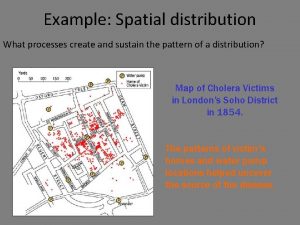Desperately Seeking Community How to Create and Sustain





















- Slides: 21

Desperately Seeking Community: How to Create and Sustain Successful Ed Tech Collaborations EDUCAUSE Annual Conference 2011 Copyright [Carole Turner and Jim Twetten, 2011. This work is the intellectual property of the author. Permission is granted for this material to be shared for non-commercial, educational purposes, provided that this copyright statement appears on the reproduced materials and notice is given that the copying is by permission of the author. To disseminate otherwise or to republish requires written permission from the author.

Desperately Seeking Community: How to Create and Sustain Successful Ed Tech Collaborations EDUCAUSE Annual Conference Wednesday, October 19, 2011 #E 11_SESS 038

Introduction • Community and collaboration • Factors that influence the success of collaborations • Description of educational technology communities at University of Wisconsin. Madison and at Iowa State University • Community conversations • Report-out • Summary

Collaborations • “Collaboration or partnering, is an effective method …to achieve common goals. Through collaboration, organizations can improve themselves by joining together to take on issues that would be beyond the scope of any single group. ”

Factors Influencing Successful Collaborations • • • Environment Purpose Membership Process and Structure Communication Resources

Community of Educational Technology Support (Com. ETS) • At both University of Wisconsin-Madison and Iowa State University • Similar and yet different environments • A foundation for other campuses

University of Wisconsin Com. ETS • • • Environment Purpose Membership Process and Structure Communication Resources

UW Com. ETS Members say: • Break down the silos • Find networking opportunities and expertise • Have communication opportunities with key campus decision makers • Com. ETS builds a culture of shared leadership • "We will advocate strongly to have the community represented. . . "

Iowa State University (Com. ETS) • • • Environment Purpose Membership Process and Structure Communication Resources

Iowa State Com. ETS Members say: • ". . . nurtures a campus-wide dialog not happening anywhere else. " • ". . . brings together faculty and staff interested in improving teaching, and has energized the campus dialog. " • "Before, we were operating in silos. Now we have a vehicle to share our success. "

Iowa State Com. ETS Wilder Foundation Research Collaboration Factors Inventory 4. 0 - 5. 0 = strength, doesn't need attention 3. 0 - 3. 9 = borderline issue, deserves discussion 1. 0 - 2. 9 = area of concern, should be addressed

Iowa State Com. ETS Collaboration Factors Inventory ISU Com. ETS Steering Committee results: 4. 3 4. 1 4. 0 Members see collaboration as in their best interest Favorable political & Social Climate Unique purpose 3. 1 2. 8 2. 5 Sufficient funds, staff, materials, and time Multiple Layers of Decision-Making Clear Roles & Policy Guidelines

Current Campus Environment • Two extremes -- more collaboration and less willingness or time to share • More centralization, and/or consolidation • Efficiency rules the day • Innovation and risk-taking still key

Community and Sustainability • At Iowa State: o clarity of faculty/staff roles o visible success in technology adoption o strong support from CIO • At UW: o Long term connections o Relationships with new leaders o Leading at various levels o Small "g" governance and advocacy

Conversations • Talk about the ways to start a community on your campus o o o Conditions and success factors already in place Possible Challenges and Barriers Possible Solutions to Challenges

Starter questions, if you like… • Related to Environment: o What's part of the current environment that will foster collaboration? o Is there a favorable political and social climate? • Purpose: o Is there a shared vision and purpose? • Communications o Are the conditions "ripe" for open and frequent communication on your campus? o Are there already existing informal relationships and communication links?

Report Out • Factors that will influence success • Barriers to collaboration • Possible solutions to barriers #E 11_SESS 038

Summary • There are common themes. • Communities are a work-in-progress. • Successful communities adapt.

7 Principles for Cultivating Communities of Practice • Design for evolution. • Open a dialogue between inside and outside perspectives. • Invite different levels of participation. • Develop both public and private spaces. • Focus on value. • Combine familiarity and excitement. • Create a rhythm for the community.

Resources • Cultivating Communities of Practice: A Guide to Managing Knowledge; by Etienne Wenger, Richard Mc. Dermott, & William Snyder. Harvard Business School Press, 2002. • Interesting Practices and Best Systems in Faculty Engagement and Support, ” Paul Hagner, 2001. http: //www. educause. edu/Resources Interesting. Practicesand. Best. Sys/ 159876 • Happy Families, Good Fences, and Winning IT Collaborations, Volume 2008, Issue 15, By Judith Pirani and Toby Sitko. http: //net. educause. edu/ir/library/pdf/ERB 0815. pdf • Wilder Foundation Collaboration Factors Inventory: http: //wilderresearch. org/tools/cfi/index. php

Speaker Information • Carole Turner: cturner@wisc. edu o UW Com. ETS: http: //comets. wisc. edu/about-comets • Jim Twetten: jtwetten@iastate. edu o Iowa State Com. ETS: http: //www. comets. iastate. edu/
 Building commitment
Building commitment The heart is wicked
The heart is wicked Fm 6-22 pdf
Fm 6-22 pdf Ability to sustain
Ability to sustain How to sustain a men's ministry
How to sustain a men's ministry Apa itu mutiple queue dan one way list
Apa itu mutiple queue dan one way list Reza ashari nasution
Reza ashari nasution Community action cycle for community mobilization
Community action cycle for community mobilization Replacement behaviors for attention seeking
Replacement behaviors for attention seeking Merchant of venice quiz act 1
Merchant of venice quiz act 1 Sensation seeking
Sensation seeking What is seeking safety
What is seeking safety Range card preparation
Range card preparation Power-seeking meaning
Power-seeking meaning Fixated consumption behaviour
Fixated consumption behaviour Netflix culture freedom & responsibility
Netflix culture freedom & responsibility Sensation seeking significato
Sensation seeking significato School admission enquiry letter
School admission enquiry letter Seeking to understand
Seeking to understand Maximum velocity fc
Maximum velocity fc Milady chapter 30 test
Milady chapter 30 test Jeremiah 6 16
Jeremiah 6 16


